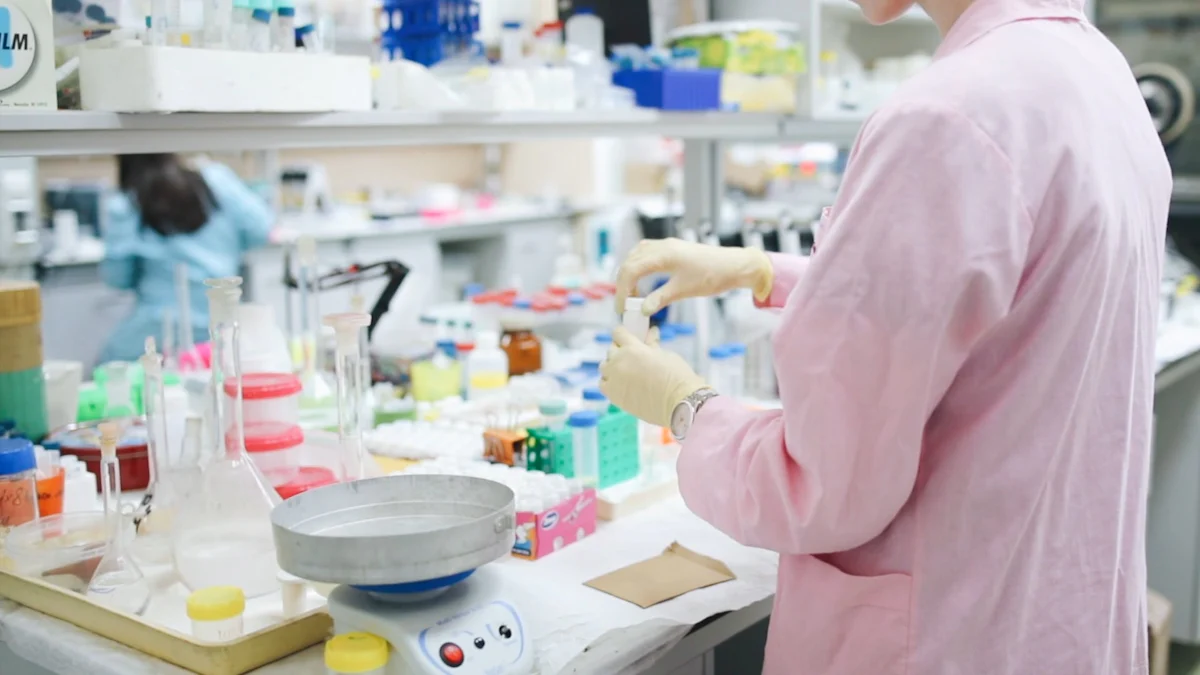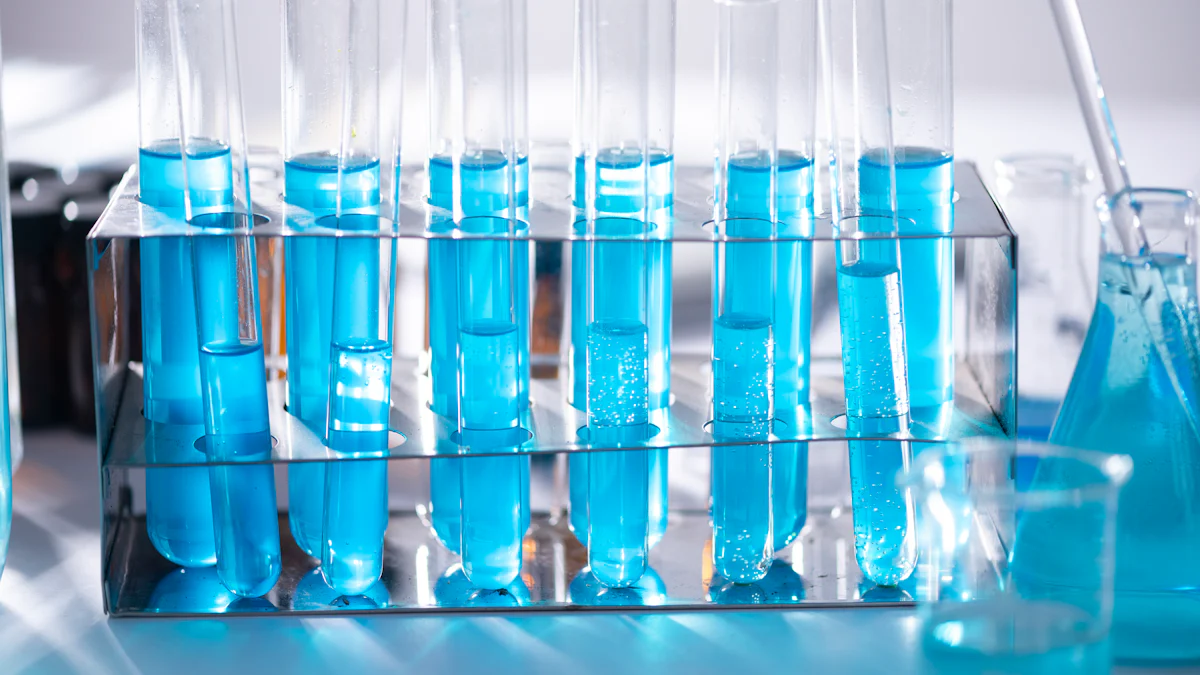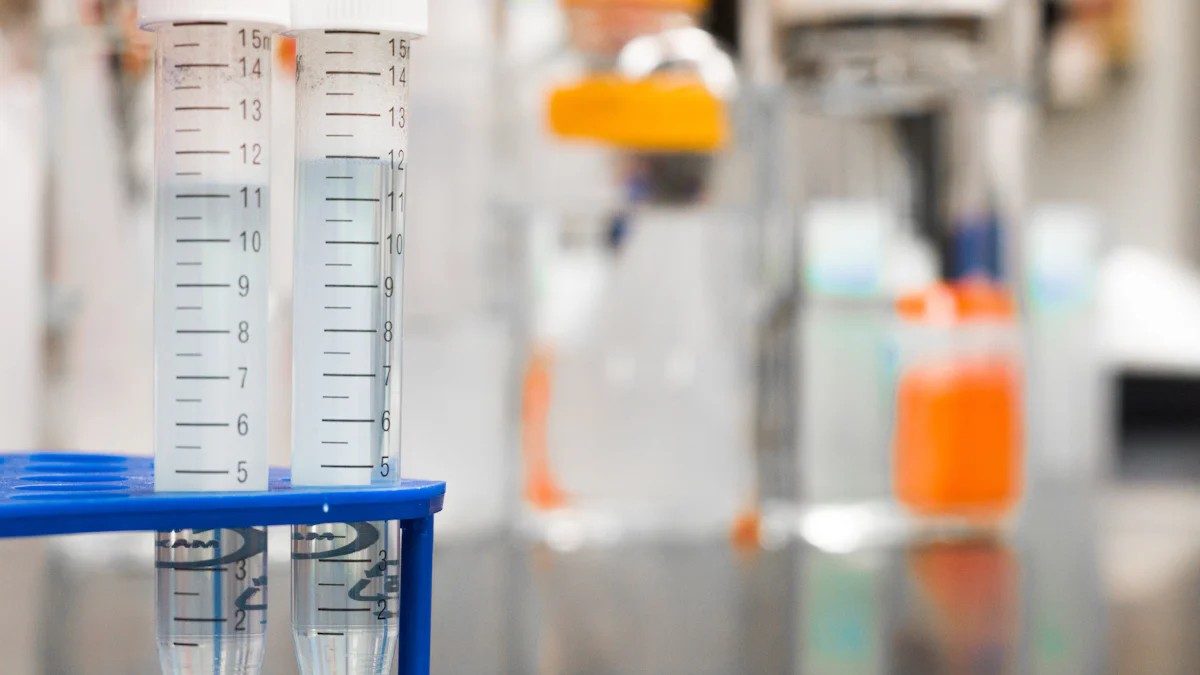
Polycarboxylate superplasticizer plays a critical role in modern concrete technology. It enhances the fluidity of concrete while maintaining its structural integrity. Slump retention, a key property in construction, ensures concrete remains workable over time. By incorporating polycarboxylate superplasticizer-slump retaining, builders achieve consistent performance, even in demanding conditions, without compromising quality or efficiency.
Key Takeaways
- Polycarboxylate superplasticizer makes concrete easier to work with and shape.
- This superplasticizer makes concrete stronger and lasts longer by using less water, creating a tougher mix.
- It helps the environment by using fewer materials, cutting costs, and lowering pollution from making concrete.
Understanding Polycarboxylate Superplasticizer-Slump Retaining
Chemical Mechanism of Slump Retention
Polycarboxylate superplasticizer-slump retaining works through a unique chemical mechanism. Its molecular structure includes long polymer chains with side chains that disperse cement particles. This dispersion reduces water demand while maintaining fluidity. The side chains create a steric hindrance effect, preventing cement particles from clumping together. This ensures the concrete remains workable for extended periods.
Additionally, the superplasticizer interacts with the hydration process of cement. It slows down the rate of water absorption by cement particles, which helps retain the slump. This controlled hydration is critical for projects requiring long transportation times or delayed placement. The chemical composition of polycarboxylate superplasticizers makes them highly effective in maintaining consistency without compromising strength.
Comparison with Traditional Plasticizers
Traditional plasticizers, such as lignosulfonates, rely on electrostatic repulsion to disperse cement particles. While effective, they often fail to retain the slump for extended durations. Their performance diminishes in high-performance concrete or under extreme environmental conditions.
In contrast, polycarboxylate superplasticizer-slump retaining offers superior performance. Its advanced molecular design ensures better dispersion and longer workability. Unlike traditional plasticizers, it provides consistent results even in low water-to-cement ratio mixes. This makes it ideal for modern construction demands, including high-rise buildings and infrastructure projects.
Builders increasingly prefer polycarboxylate-based solutions due to their reliability and adaptability. They outperform older technologies in both efficiency and durability, making them a cornerstone of contemporary concrete technology.
Benefits of Polycarboxylate Superplasticizer-Slump Retaining

Enhanced Workability and Consistency
Polycarboxylate Superplasticizer-Slump Retaining significantly improves the workability of concrete. Its advanced chemical composition ensures that concrete remains fluid and easy to handle during placement. This property is especially beneficial for projects requiring intricate designs or extended working times. Workers can achieve precise finishes without the risk of premature stiffening.
Consistency is another critical advantage. The superplasticizer ensures uniform dispersion of cement particles, reducing segregation and bleeding. This results in a homogenous mix that performs reliably across different batches. Builders can depend on this consistency to meet stringent quality standards in modern construction.
Improved Strength and Durability
Concrete treated with Polycarboxylate Superplasticizer-Slump Retaining exhibits enhanced strength. By reducing the water-to-cement ratio, the superplasticizer promotes denser hydration products. This leads to higher compressive strength and better resistance to cracking.
Durability also improves due to reduced porosity. The dense microstructure minimizes the ingress of harmful substances like chlorides and sulfates. This makes the concrete more resistant to environmental factors such as freeze-thaw cycles and chemical attacks. These properties extend the lifespan of structures, reducing maintenance costs over time.
Environmental and Cost Efficiency
Polycarboxylate Superplasticizer-Slump Retaining contributes to sustainability in construction. Its ability to reduce water and cement usage lowers the carbon footprint of concrete production. Builders can achieve high-performance mixes with fewer resources, aligning with green building practices.
Cost efficiency is another advantage. The reduced material requirements translate to lower expenses without compromising quality. Additionally, the extended workability minimizes waste caused by rejected batches. These benefits make the superplasticizer an economical choice for both small-scale and large-scale projects.
Applications in Modern Construction

Ready-Mix Concrete and High-Performance Concrete
Polycarboxylate Superplasticizer-Slump Retaining plays a pivotal role in ready-mix concrete production. Ready-mix concrete requires consistent workability during transportation to construction sites. The superplasticizer ensures the concrete retains its slump, even during extended transit times. This reliability minimizes the risk of re-tempering or adding water, which can compromise the mix’s quality.
High-performance concrete also benefits significantly from this technology. These mixes often have low water-to-cement ratios to achieve superior strength and durability. The superplasticizer enhances fluidity without increasing water content, ensuring the concrete meets stringent performance standards. Its ability to maintain workability over time makes it indispensable for high-rise buildings, bridges, and other demanding applications.
Large-Scale and Specialized Projects
Large-scale projects, such as dams, tunnels, and highways, demand concrete with exceptional consistency and extended workability. Polycarboxylate Superplasticizer-Slump Retaining ensures uniform performance across massive volumes of concrete. This consistency reduces delays and ensures structural integrity in critical infrastructure projects.
Specialized projects, including architectural designs and precast elements, also rely on this superplasticizer. Intricate molds and detailed finishes require concrete that remains workable for precise placement. The superplasticizer’s ability to prevent segregation and bleeding ensures high-quality results. Its adaptability makes it a preferred choice for both conventional and innovative construction techniques.
The versatility of this superplasticizer underscores its importance in modern construction. From ready-mix concrete to specialized applications, it delivers reliable performance and superior results.
Limitations and Key Considerations
Dosage Sensitivity and Compatibility
Polycarboxylate superplasticizers require precise dosage to achieve optimal performance. Overdosing can lead to excessive fluidity, causing segregation and bleeding in the concrete mix. Underdosing, on the other hand, may result in insufficient slump retention and reduced workability. Manufacturers often provide recommended dosage ranges, but adjustments may be necessary based on specific project requirements.
Compatibility with other admixtures and cement types is another critical factor. Some cement compositions or supplementary materials, such as fly ash or slag, may react differently with the superplasticizer. Builders should conduct compatibility tests to ensure consistent results. Proper evaluation minimizes risks and ensures the desired performance in the final concrete mix.
Managing Slump Loss Over Time
While Polycarboxylate Superplasticizer-Slump Retaining offers extended workability, slump loss can still occur under certain conditions. High temperatures, prolonged transportation, or delays in placement may accelerate the loss of fluidity. To address this, builders can use retarders or hydration stabilizers alongside the superplasticizer.
Monitoring environmental factors and adjusting the mix design can also help manage slump loss. For instance, using chilled water or shading materials during hot weather can slow down hydration. These proactive measures ensure the concrete remains workable until placement.
Cost Implications and Environmental Factors
The initial cost of polycarboxylate superplasticizers is higher than traditional plasticizers. However, their ability to reduce water and cement usage offsets this expense. Builders often find that the long-term benefits, such as improved durability and reduced maintenance, outweigh the upfront costs.
From an environmental perspective, these superplasticizers contribute to sustainable construction. By lowering cement consumption, they help reduce carbon emissions associated with concrete production. Their role in creating high-performance, resource-efficient mixes aligns with modern green building practices.
Proper planning and evaluation are essential to maximize the benefits of polycarboxylate superplasticizers while addressing their limitations. Builders should consider dosage, compatibility, and environmental factors to achieve optimal results.
Polycarboxylate Superplasticizer-Slump Retaining has revolutionized concrete technology by ensuring extended workability and consistent performance. Its benefits, including enhanced strength, durability, and environmental efficiency, make it indispensable in modern construction. Builders must carefully manage dosage and compatibility to maximize its potential. Proper application ensures optimal results across diverse projects, from ready-mix to large-scale infrastructure.
FAQ
What is the recommended dosage for polycarboxylate superplasticizer-slump retaining?
The recommended dosage varies between 0.1% and 0.3% of cement weight. Builders should consult the manufacturer’s guidelines and conduct tests to determine the optimal amount for their project.
Can polycarboxylate superplasticizers be used with all types of cement?
Polycarboxylate superplasticizers are compatible with most cement types. However, compatibility tests are essential when using supplementary materials like fly ash or slag to ensure consistent performance.
How does temperature affect slump retention?
High temperatures accelerate hydration, reducing slump retention. Builders can mitigate this by using chilled water, hydration stabilizers, or shading materials during mixing and placement.
Post time: Jan-22-2025

